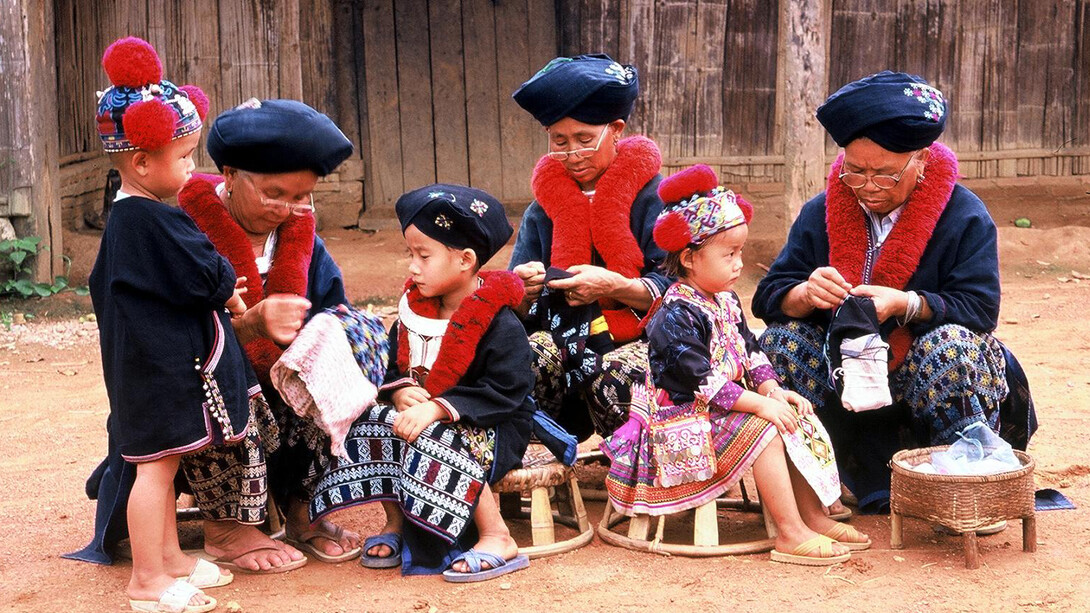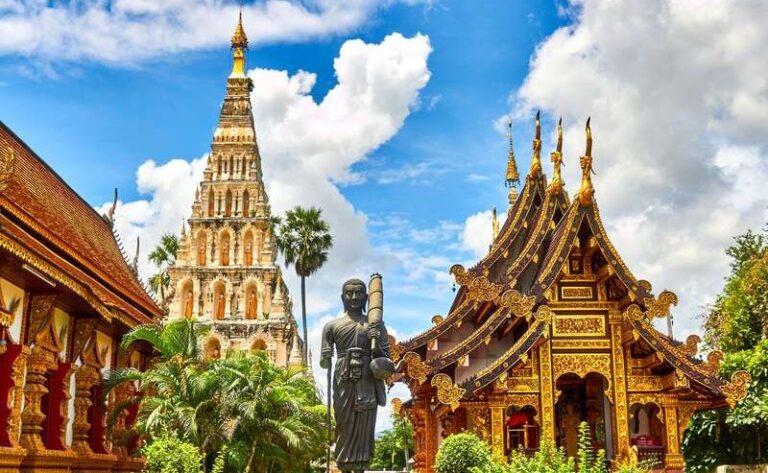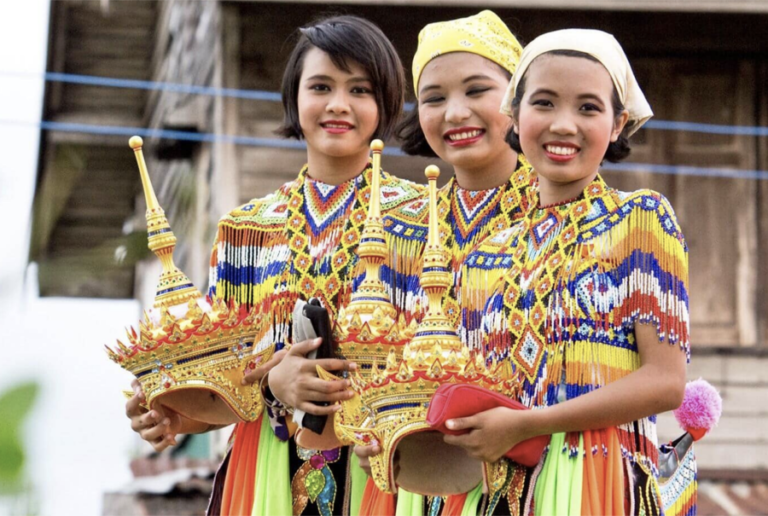Unveiling the Enchanting World of Thailand's Hill Tribes
Embark on a captivating journey into the enchanting world of Thailand’s hill tribes. Discover the Akha, Karen, Hmong, and other ethnic minority groups that have inhabited the mountainous regions of Thailand for generations. Delve into their rich history, cultural significance, and captivating practices.
This article provides practical information on reaching these remote communities, staying amidst their vibrant culture, and engaging in immersive experiences.
Immerse yourself in the unique traditions, spirituality, cuisine, and crafts of these captivating hill tribe communities for a truly enriching travel experience.
Key Takeaways
- Thailand is home to over 70 distinct ethnic groups, with the largest being Thai, Chinese, and Malay.
- Hill tribes, such as the Akha, Karen, and Hmong tribes, have inhabited the mountainous regions of northern Thailand for generations and have played a significant role in shaping the country’s history and culture.
- Hill tribes have faced challenges such as displacement from their traditional lands and exploitation by individuals seeking to profit from their cultural practices.
- Exploring hill tribe communities offers opportunities to learn about their unique cultures, practices, and traditions, as well as participate in activities such as trekking, observing traditional crafts, and experiencing local life.
Rich History and Cultural Significance
Throughout the centuries, Thailand’s hill tribes have played a vital role in shaping the rich history and cultural significance of the country.
These ethnic minority groups, including the Akha, Karen, and Hmong tribes, have inhabited the mountainous regions of northern Thailand for generations.
Their presence and contributions have had a profound impact on the cultural diversity of Thailand. However, it is important to acknowledge that hill tribes have also faced challenges such as displacement from their traditional lands and exploitation. Despite these hardships, they have managed to preserve their unique cultures, practices, and traditions, which have been passed down through generations.
Visiting hill tribe communities offers a deeper understanding of their way of life and provides an opportunity to appreciate the vast cultural heritage they possess.
The Akha, Karen, and Hmong Tribes: An Introduction
The Akha, Karen, and Hmong tribes are three significant ethnic minority groups that have contributed to the cultural tapestry of Thailand’s hill tribe communities. Each tribe has its own unique culture, practices, and traditions that have been passed down through generations.
The Akha tribe is known for their distinctive dress and extensive knowledge of traditional medicine.
The Karen tribe, also known as the Long-Neck tribe, is famous for wearing brass coils around their necks and their exceptional weaving skills.
The Hmong tribe is renowned for their intricate embroidery, batik textiles, and shamanistic beliefs.
These tribes have played an important role in shaping the history and culture of Thailand’s hill tribe communities.
Visiting these communities offers a deeper understanding of their way of life and the opportunity to appreciate their rich cultural heritage.
Immersive Experiences in Hill Tribe Communities
Visitors can engage in a variety of immersive experiences and activities in hill tribe communities. One of the highlights of visiting a hill tribe community is the opportunity to witness and participate in traditional ceremonies. These ceremonies offer a glimpse into the spiritual practices and beliefs of the community, providing a deeper understanding of their culture.
Additionally, visitors can observe and learn about the intricate crafts and skills of the hill tribe communities. From weaving textiles to making bamboo baskets and creating silver jewelry, these crafts showcase the creativity and craftsmanship of the community members.
Lastly, exploring the natural landscapes surrounding the hill tribe communities offers breathtaking views, lush forests, and cascading waterfalls. This provides a serene and picturesque setting for visitors to immerse themselves in the beauty of nature.
Exploring Unique Cultural Practices
One of the fascinating aspects of hill tribe communities in Thailand is the rich tapestry of unique cultural practices they uphold.
These communities have preserved their traditional customs and rituals for generations, offering visitors a glimpse into the vibrant diversity of Thai culture.
Here are some of the distinctive cultural practices you can explore:
- Traditional Clothing and Accessories:
- Hill tribes are known for their intricate embroidery, vibrant textiles, and handmade jewelry, each reflecting their distinct identity and heritage.
- The Akha tribe’s distinctive dress and the Karen tribe’s brass coils worn around the neck are iconic examples of their cultural attire.
- The Hmong tribe’s intricate batik textiles and embroidery are renowned for their beauty and craftsmanship.
- Spirituality and Religion:
- Religion and spirituality play a significant role in the lives of hill tribe communities.
- Shamanistic beliefs and practices are prevalent, with shamans acting as spiritual leaders and healers.
- Visitors can witness traditional ceremonies and rituals that offer a deeper understanding of the spiritual practices of these communities.
- Culinary Traditions:
- Hill tribe cuisine showcases a harmonious blend of locally sourced ingredients, such as fruits, vegetables, and herbs.
- Traditional cooking methods, such as steaming and grilling, are used to enhance the flavors and textures of the dishes.
- Exploring the unique flavors and culinary traditions of hill tribe communities is a delightful experience for food enthusiasts.
Getting There and Accommodations
Arriving at hill tribe communities and finding suitable accommodations can be facilitated through various transportation options and lodging choices. Hill tribe communities are often located in remote areas that are accessible by foot or narrow roads.
To reach these communities, visitors can hire a local guide, rent a motorbike, or take a songthaew, a shared taxi truck. Once there, accommodation options include homestays, guesthouses, and small hotels.
Homestays provide an authentic travel experience, allowing visitors to immerse themselves in the daily life of the villagers and participate in traditional activities. To add depth and complexity to the discussion, here is a table showcasing the different transportation options and accommodation choices:
| Transportation Options | Lodging Choices |
|---|---|
| Hiring a local guide | Homestays |
| Renting a motorbike | Guesthouses |
| Taking a songthaew | Small hotels |
These options cater to different preferences and budgets, ensuring that visitors have a comfortable and immersive experience during their stay in hill tribe communities.
Participating in Festivals and Cultural Activities
During their visit to hill tribe communities, travelers can engage in various festivals and cultural activities, immersing themselves in the vibrant traditions and celebrations of these unique communities.
- Akha Swing Festival: This festival celebrates the harvest season and is a joyous occasion filled with traditional dances, music, and games. Travelers can join in the festivities and witness the Akha tribe’s rich cultural heritage.
- Karen New Year celebration: The Karen tribe’s New Year celebration is a colorful event that showcases their traditional dress, vibrant parades, and captivating performances of traditional music and dance. This is an opportunity for visitors to experience the warmth and hospitality of the Karen tribe.
- Hmong New Year celebration: The Hmong tribe’s New Year celebration is a lively event that showcases their intricate embroidery, batik textiles, and shamanistic beliefs. Travelers can witness traditional ceremonies, taste delicious Hmong cuisine, and appreciate the Hmong tribe’s unique cultural practices.
Participating in these festivals and cultural activities not only provides an immersive experience but also deepens understanding and appreciation for the rich cultural heritage of Thailand’s hill tribe communities.
Responsible Travel in Hill Tribe Communities
To ensure the preservation of cultural heritage and respect for local communities, it is imperative to practice responsible travel when visiting hill tribe communities in Thailand.
Responsible travel involves being mindful of the impact that our presence can have on these communities and taking steps to minimize any negative effects.
This includes seeking permission before taking photos or entering someone’s home, respecting local customs and traditions, and supporting the local economy through ethical purchases.
By practicing responsible travel, we can help preserve the rich cultural heritage of these communities for future generations and ensure that our interactions with them are mutually beneficial.
It is important to approach these communities with humility, curiosity, and a willingness to learn from their way of life.
Frequently Asked Questions
What Are the Social and Political Challenges Faced by Hill Tribe Communities in Thailand?
Hill tribe communities in Thailand face social and political challenges, including displacement from their traditional lands, exploitation by outsiders, and marginalization. These challenges threaten their cultural heritage and livelihoods, requiring support for their rights and sustainable development.
How Has Tourism Impacted the Traditional Way of Life of Hill Tribe Communities?
Tourism has had both positive and negative impacts on the traditional way of life of hill tribe communities in Thailand. While it has provided economic opportunities, it has also led to cultural commodification and loss of authenticity.
What Efforts Are Being Made to Preserve the Cultural Heritage of Hill Tribe Communities?
Efforts to preserve the cultural heritage of Thailand’s hill tribe communities include promoting responsible tourism practices, supporting local initiatives and organizations, and engaging in cultural exchange. These measures aim to protect their traditions and livelihoods for future generations.
Are There Any Specific Etiquettes or Customs That Visitors Should Be Aware of When Interacting With Hill Tribe Communities?
When interacting with hill tribe communities in Thailand, visitors should be aware of specific etiquettes and customs. Seek permission before taking photos or entering homes, respect local customs, and support the local economy through ethical purchases.
What Are Some Sustainable Tourism Initiatives That Are Supporting the Livelihoods of Hill Tribe Communities?
Some sustainable tourism initiatives supporting the livelihoods of Thailand’s hill tribe communities include community-based tourism projects, fair trade initiatives for traditional crafts, and educational programs that promote cultural preservation and sustainable development.
Conclusion
In conclusion, the hill tribes of Thailand offer a fascinating glimpse into the country’s rich cultural diversity.
Their unique traditions, history, and way of life provide visitors with an immersive and enriching travel experience.
By respecting local customs, supporting initiatives that preserve their cultural heritage, and practicing responsible travel, we can contribute to the preservation of these captivating hill tribe communities for future generations to appreciate and learn from.
The enchanting world of Thailand’s hill tribes awaits those who seek to delve into its unique tapestry of traditions and practices.







